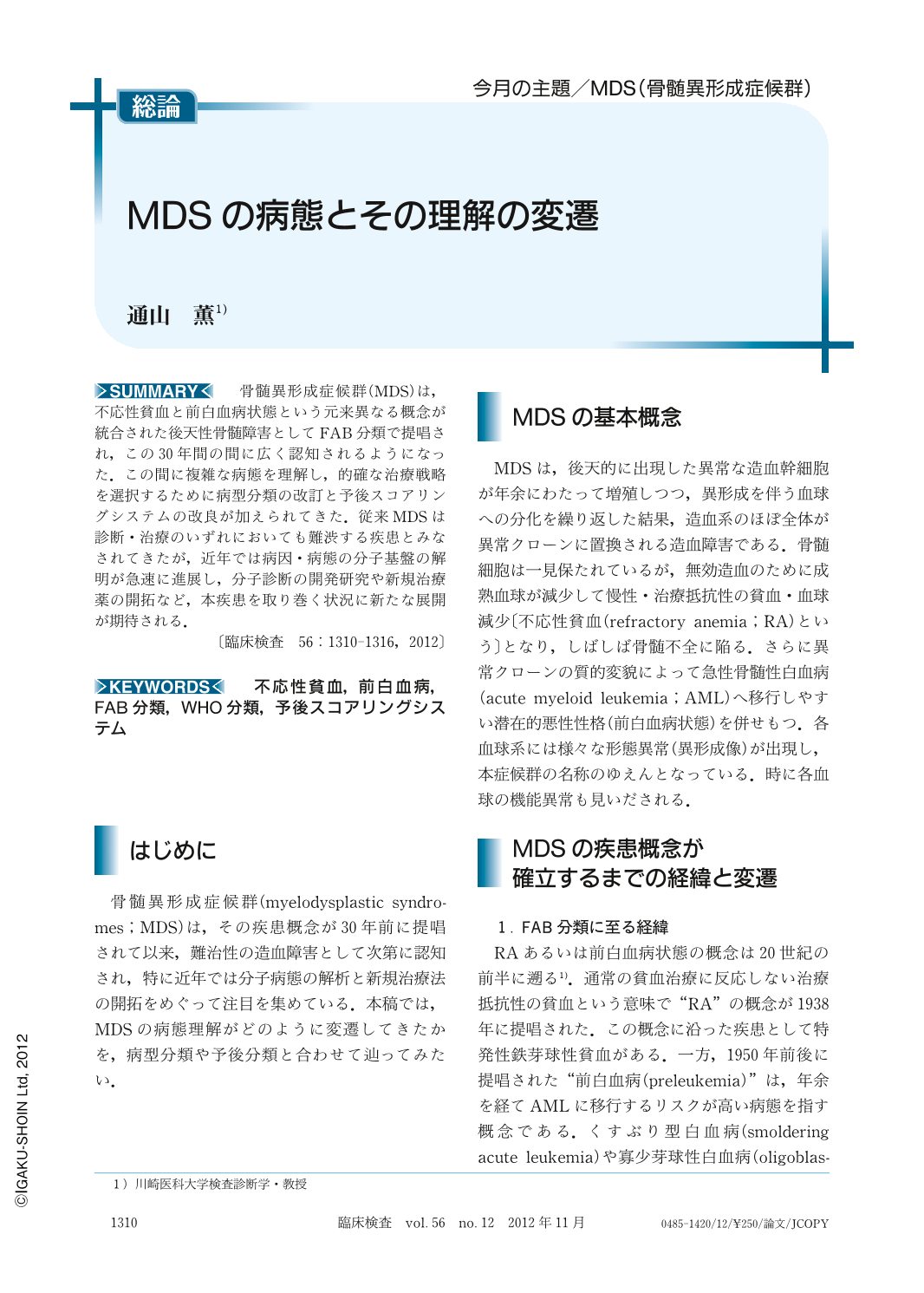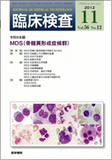Japanese
English
- 有料閲覧
- Abstract 文献概要
- 1ページ目 Look Inside
- 参考文献 Reference
骨髄異形成症候群(MDS)は,不応性貧血と前白血病状態という元来異なる概念が統合された後天性骨髄障害としてFAB分類で提唱され,この30年間の間に広く認知されるようになった.この間に複雑な病態を理解し,的確な治療戦略を選択するために病型分類の改訂と予後スコアリングシステムの改良が加えられてきた.従来MDSは診断・治療のいずれにおいても難渋する疾患とみなされてきたが,近年では病因・病態の分子基盤の解明が急速に進展し,分子診断の開発研究や新規治療薬の開拓など,本疾患を取り巻く状況に新たな展開が期待される.
MDS (myelodysplastic syndromes) are acquired bone marrow disorders characterized by therapy-resistant cytopenias and by susceptibility to leukemic transformation. Systematic categorization of MDS was first proposed by the FAB (French-American-British) Co-operative Group in 1982, and thereafter the classification of MDS has been revised and improved until the current WHO classification (4th edition) together with the proposal of the risk categorization by the International Prognostic Scoring System.
MDS are still one of the most refractory bone marrow diseases, but lots of molecular data have been accumulated and novel-type treatment strategies have been developed for better understanding and approaches aiming to overcome these disorders.

Copyright © 2012, Igaku-Shoin Ltd. All rights reserved.


